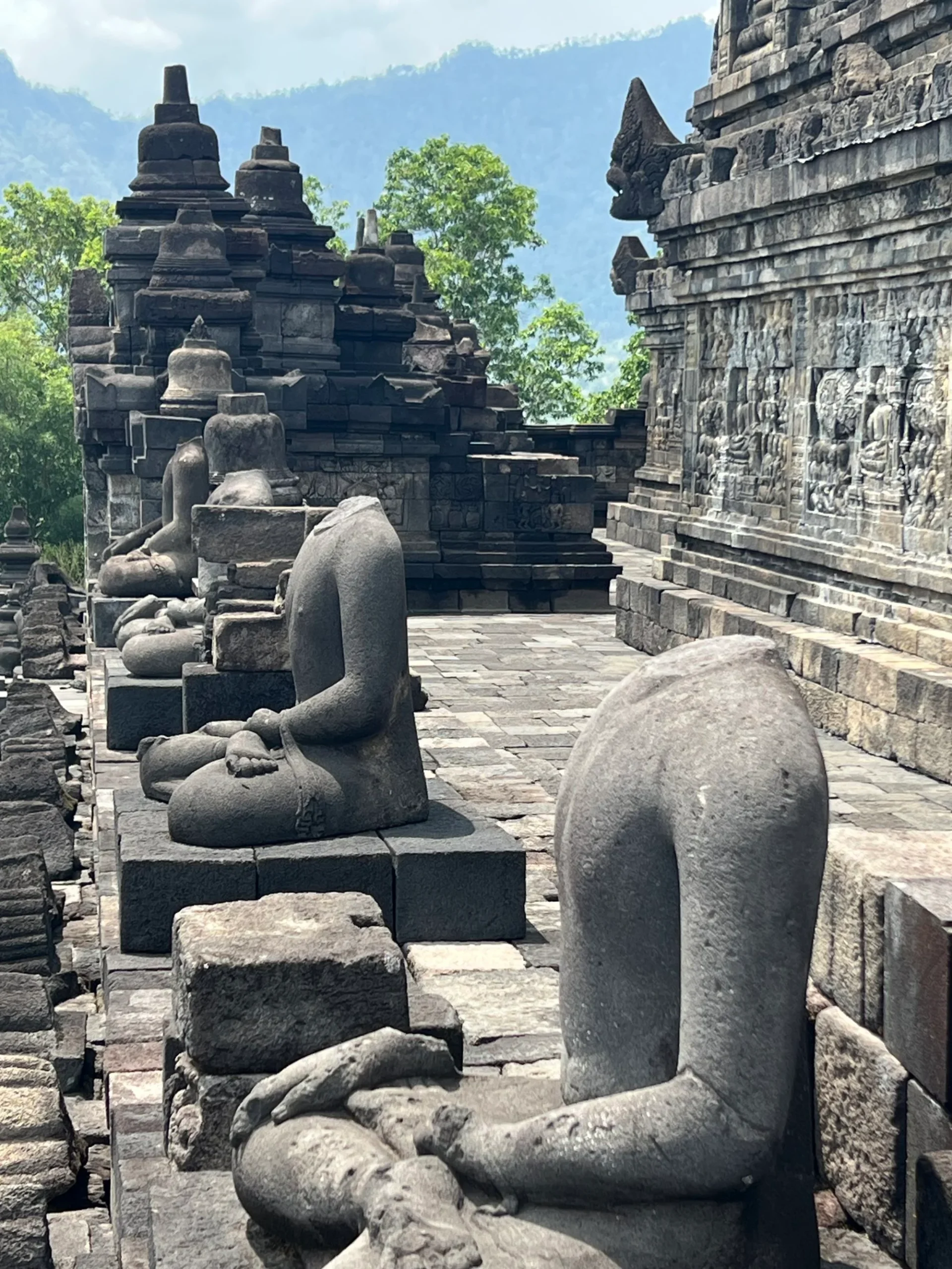Nestled near Yogyakarta in central Java, Indonesia, the Candi Borobudur temple stands as a testament to the grandeur of Mahayana Buddhism. This architectural masterpiece, dating back to the 8th and 9th centuries, is not just the largest Buddhist temple in the world but also a symbol of intricate artistry and profound wisdom. Its comparison with Cambodia’s Angkor Wat is inevitable, given its captivating beauty and historical significance.
A visit to Borobudur is a walk through the annals of time. The temple’s design is a visual representation of Buddhist cosmology, shaped like a mandala when viewed from above. The journey across its levels, from the pyramidal base to the top, is akin to traversing the path to enlightenment. The temple’s surfaces are adorned with over 2,670 bas-reliefs, each telling a story from the life of Buddha and the society of that era. These panels are like windows into the past, offering glimpses of daily life, culture, and customs of a civilization long gone.
At the heart of Borobudur lies its uppermost level, where 72 stupas stand guard around a massive central stupa. The sight of these stupas, with their latticed stone domes, each housing a serene Buddha statue, is nothing short of mesmerizing. However, many of these statues bear the scars of time, with a significant number missing their heads – a stark reminder of the temple’s turbulent history.
The temple’s journey through time has been one of both reverence and neglect. Recognized as a UNESCO World Heritage site in 1991, Borobudur has undergone several restorations. Yet, the challenges of preserving such an ancient site have been many. Vandalism, graffiti, and general disregard for its sanctity have marred its beauty in recent years. This led to its closure in March 2020, a move initiated by UNESCO to address these pressing concerns.
The reopening of Borobudur brought forth stringent regulations aimed at its preservation. Visitor numbers are now limited, with guided tours being mandatory. Additionally, protective measures such as bamboo slippers for visitors have been implemented to safeguard the temple’s delicate stonework. Security measures have also been enhanced to monitor and enforce these rules effectively.
Despite these necessary restrictions, the allure of Borobudur remains undiminished. Its narrative panels continue to fascinate, and the serene Buddhas still impart a sense of peace to those who visit. The temple’s history, coupled with the efforts to preserve it, only adds to its mystique, making it a must-visit destination for anyone seeking to explore the wonders of the ancient world. As one navigates the temple’s corridors and climbs its steep steps, the experience remains as enchanting as ever, offering a glimpse into a bygone era’s spiritual and artistic zenith.
READ MORE:
